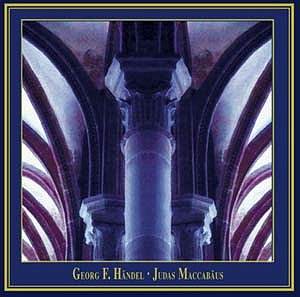 Composer: George Frideric Handel
Composer: George Frideric Handel
Works: Water Music Suite in F, Suite in D, Suite in G, Sonata from Il trionfo del Tempo e del Disinganno, Music for the Royal Fireworks
Performers: Virtuosi of England, Wind Virtuosi of England, Nicolas Kynaston (organ, Sonata only), Arthur Davison (conductor)
Recording: Fairfield Hall Croydon (Water Music), Conway Hall (Fireworks Music), Royal Festival Hall (Sonata)
Label: EMI Classics for Pleasure
George Frideric Handel’s oeuvre, particularly his orchestral suites and celebratory works, remains a cornerstone of the Baroque canon. The “Water Music,” composed for a royal river outing in 1717, and the “Music for the Royal Fireworks,” written for a grand public celebration in 1749, encapsulate the exuberance and grandeur of Handel’s style. These works are not merely historical artifacts; they breathe life into the ceremonial occasions they were originally intended for, showcasing Handel’s mastery of orchestration and his keen sense of theatricality. The recordings reviewed here, with conductor Arthur Davison at the helm, provide an opportunity to examine how these virtues are realized in performance.
The interpretation of the “Water Music” suites reveals both the advantages and limitations of Davison’s conducting. The Virtuosi of England exhibit commendable technical prowess, executing the intricate passages with precision. However, the interpretation occasionally lacks the buoyancy that characterizes the best renditions of these suites. For example, the opening movement of the Suite in F, a lively Allegro, should feel like a spirited dialogue among the instruments. Instead, the phrasing often feels overly measured, leading to an impression of stagnation rather than the intended effervescence. The balance of the ensemble is a strong point; winds and strings blend well, yet the lack of dynamic contrast leaves some passages, particularly in the slower movements, feeling monochromatic.
The performance of the “Music for the Royal Fireworks,” while robust, does not reach the heights of more celebrated recordings—such as Sir Charles Mackerras’s groundbreaking interpretation from 1959. Davison’s approach is muscular and confident, especially in the climactic moments, yet the interpretation can feel heavy-handed. The Allegro of the overture, for instance, requires a lighter touch to reflect the fireworks’ brilliance, a quality that seems somewhat obscured under Davison’s baton. The musicians’ execution is commendable, but the overall pacing lacks the necessary buoyancy to elevate the celebratory spirit inherent in Handel’s writing.
Sound quality in this EMI recording remains impressive for its time, with clear separation of instrumental lines and an engaging acoustic that captures the ensemble’s character. The engineering respects the natural timbres of the instruments, allowing the listener to appreciate the intricate interplay between the strings and winds. However, it sometimes accentuates the interpretative limitations; the absence of a vibrant energy in the performance becomes more apparent against the backdrop of such competent engineering.
Davison’s interpretation of the Sonata from “Il trionfo del Tempo e del Disinganno” introduces another layer of complexity. Here, the organ, played by Nicolas Kynaston, adds a unique texture that complements the orchestral forces. Yet, even in this context, one might wish for more expressive phrasing and a greater sense of dialogue between the organ and strings. The technical execution is solid, but the interpretative choices tend to flatten the emotional arc of the music, which should ideally convey the struggle between Time and Disillusionment.
This collection of Handel’s works, while technically proficient and well-recorded, ultimately lacks the interpretative fire necessary to illuminate the vibrant character of Handel’s music. The performances present a respectful homage to the composer’s genius but do not transcend the ordinary to achieve the extraordinary. The recordings are valuable for their clarity and historical interest, but one finds oneself yearning for the inspired interpretative decisions that can transform these familiar pieces into revelatory experiences.



